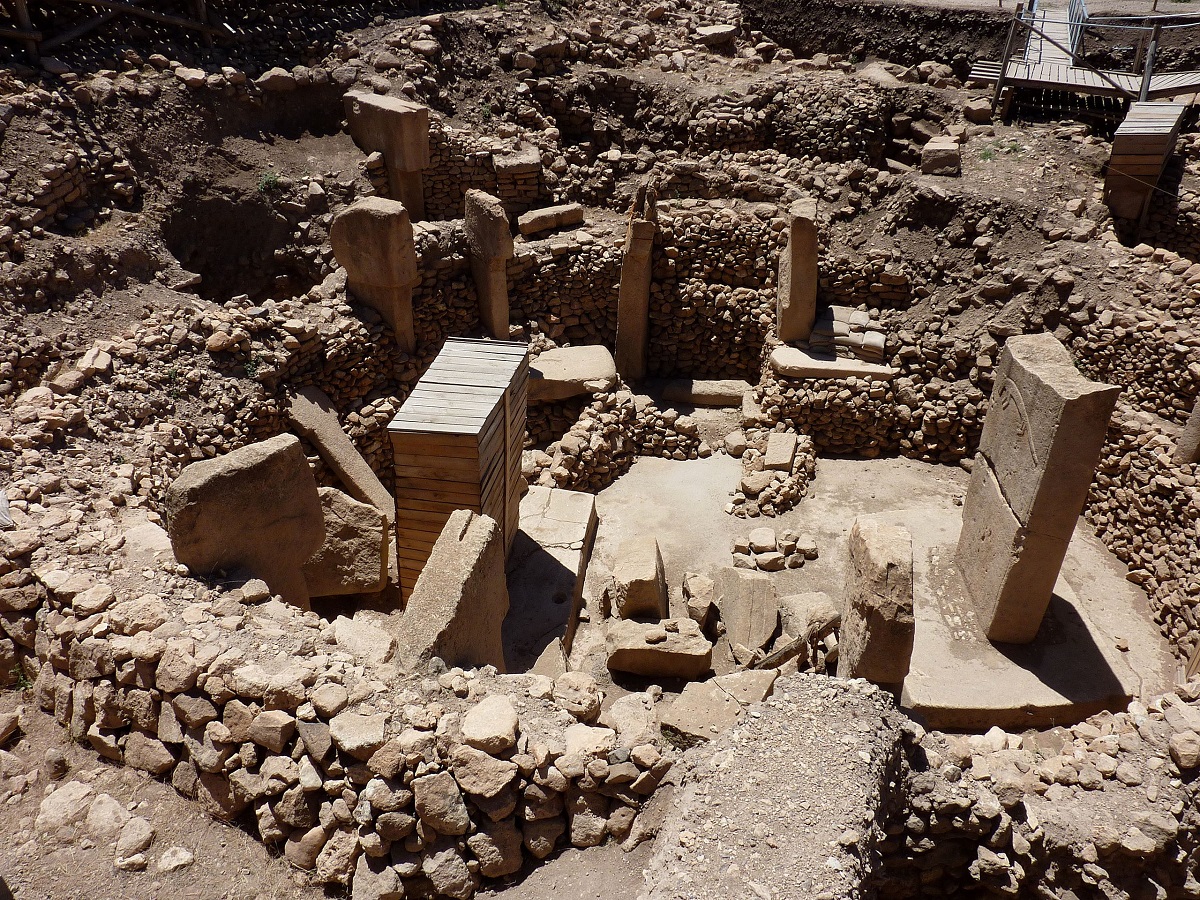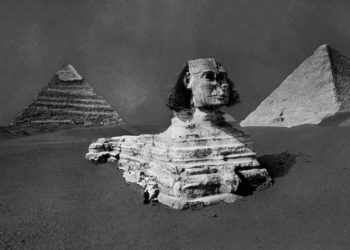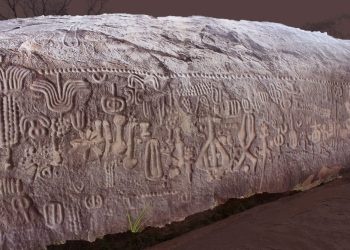Some 13,000 years ago, a massive comet fragmented and impacted Earth, changing the planet in more ways than one. The catastrophic collision was powerful. In fact, it was so powerful it is likely to have triggered a mass extinction on the planet, resetting along the way a number of ancient cultures that may have already been relatively well-developed at the time.
Around 13,000 years ago (12,800 to be precise), Earth cooled off rapidly. Scientists have found that in the span of just a few years, the average temperate on Earth dropped abruptly, resulting in a climate as low as -10 degrees Celsius (14 degrees Fahrenheit) in some regions of the planet’s Northern Hemisphere. It was an extreme change, and scientists have found evidence that this cooler period lasted for up to 1,400 years, thanks to layers of ice found in Greenland.
This abrupt change in Earth’s climate is defined by the so-called Younger Dryas theory, which marked the start of an abrupt decline in ice-age megafauna, leading to the extinction of around 35 different genera of animals in Northern America alone. During the Younger Dryas, not only animals went extinct. It is believed that this period also marked the abrupt decline among different cultures around the globe, including the Clovis culture in America. The catastrophic collision 12,800 years ago is now seen and widely accepted as leaving a profound imprint in many developing cultures, starting a kind of global reset.
Although many authors and scientists have theorized that such an event occurred around 13,000 years ago, the evidence was scarce, albeit there. Geologic wisdom blames the Younger Dryas on the failure of glacial ice dams keeping back huge lakes in central North America and the sudden, extensive blast of freshwater they discharged into the North Atlantic. This freshwater influx is believed to have eventually slowed ocean circulation and ended up cooling the climate. The Younger Dryas event comes from a wildflower called Dryas octopetala, which can tolerate icy conditions, which became common in many parts of Europe around 12,800 years ago.
But was the abrupt change in Earth’s climate caused by a phenomenon from Earth, or did the culprit arrive from outer space?
Evidence that speaks for itself
Cumulative evidence points towards the sky. The so-called impact hypothesis states that a comet or asteroid fragment impacted our planet around 13,000 years ago, causing catastrophic climate changes. Not only did this collision completely disrupt the glacial ice sheets, but it also caused the ocean’s current to come to a halt. It is also believed that this cosmic collision triggered a massive set of wildfires across the planet, eventually blocking the sunlight due to extensive smoke. Scientists have calculated that as much as ten percent of global forests and grasslands burned following the extraterrestrial impact. The scientific study of ocean, lake, terrestrial, and ice core records shows massive peaks in particles that are directly associated with burning: charcoal and soot. The most curious thing is the evidence perfectly fits into the time of the Younger Dryas.
You would naturally find this data as the result of catastrophic wildfires after a massive cosmic collision, say scientists. Furthermore, over the years, scientific analysis of different parts of the world has revealed a variety of exotic impact-related materials, including high-temperature iron, high-temperature melt-glass, and elevated concentrations of nickel, osmium, iridium, and platinum. Although the evidence supports a cosmic impact scenario, other studies have suggested that these materials–microspherules and nanodiamonds–can be formed by natural processes not involving a comet impact.
But in a new study published in Scientific Reports, archaeologist Christopher Moore and 16 colleagues have discovered evidence of a comic impact after studying White Pond near Elgin, South Carolina. “We continue to find evidence and expand geographically. Numerous papers have come out in the past couple of years with similar data from other sites that almost universally support the notion that an extraterrestrial impact or comet airburst caused the Younger Dryas climate event,” Moore revealed.
Professor Christopher Moore is also the man behind previous studies that have found spikes and elevated platinum levels in different archeological sites, including one in Chile, which happens to be the first direct evidence in the Southern Hemisphere. In other words, scientists initially thought the evidence they had come across was a North American thing, but then they found traces of similar material all around the globe. “First, we thought it was a North American event, and then there was evidence in Europe and elsewhere that it was a Northern Hemisphere event. And now, with the research in Chile and South Africa, it looks like it was probably a global event,” Moore explained.
In addition to the above, scientists believe they have found the site of the initial impact in Greenland. A massive crater revealed unusually high amounts of platinum and iridium in outwash sediments. Although said crater has not been dated yet, scientists see it as a smoking gun that can help confirm the cosmic impact scenario. Data gathered in South America and other parts of the world suggest the cosmic event may have actually included numerous impacts and airbursts that happened on a global scale.
The data obtained from White Pond in South Carolina adds to the wealth of evidence supporting a cosmic impact. Researchers used a core barrel and extracted sediment samples from beneath the bond. These samples were then dated to the start of the Younger Dryas. The scientists discovered a large platinum anomaly within the core samples, consistent with findings from other sites. In addition to the platinum anomaly within the sediments, the scientists found a decrease in fungal spores associated with the dung of large herbivores precisely at the start of the Younger Dryas period, a telltale sign of a decline in ice-age mini fauna traced back to the time of impact. But although the cosmic impact was a major part, it wasn’t the only even responsible for the extinction.
“We speculate that the impact contributed to the extinction, but it wasn’t the only cause. Overhunting by humans almost certainly contributed, too, as did climate change,” Moore says. “Some of these animals survived after the event, in some cases for centuries. But from the spore data at White Pond and elsewhere, it looks like some of them went extinct at the beginning of the Younger Dryas, probably as a result of the environmental disruption caused by impact-related wildfires and climate change.”
Göbekli Tepe
Curiously, one of the most iconic ancient sites on Earth, Göbekli Tepe in Turkey, may offer evidence of the cosmic impact, as witnessed by people around 13,000 years ago. Göbekli Tepe is widely regarded as one of the most ancient temples ever built on Earth. Evidence suggests the site dates back to around 10,000 BC. It was there where an unknown culture erected more than 200 stone pillars in around 20 circles. Each of the pillars has a height of around six meters, weighing up to ten tons.

Drawn on the surface of these pillars is what scientists believe is evidence of a cosmic impact. Using computer simulations of the Solar System around that time, researchers in 2017 found that the carvings at Göbekli Tepe represent a potential comet impact that took place around 11,000 BCE – curiously, just around the same time a mini ice age caused the world, and civilization as we know it, to change forever. Scientists from the University of Edinburgh in the UK suggest that various carvings found at Göbekli Tepe show how a comet strike may have been responsible for Earth’s history-changing period.
Speaking to the Telegraph in 2017, Sarah Knapton explained:
“I think this research, along with the recent finding of a widespread platinum anomaly across the North American continent, virtually seal the case in favor of [a Younger Dryas comet impact]. Our work serves to reinforce that physical evidence. What is happening here is the process of paradigm change. In addition to being the oldest temple on Earth, Turkey’s ancient site may have also been the oldest cosmic observatory on Earth. “It appears Göbekli Tepe was, among other things, an observatory for monitoring the night sky,” Martin Sweatman, from the University of Edinburgh’s School of Engineering, revealed in an interview with the Press Association. One of its pillars seems to have served as a memorial to this devastating event – probably the worst day in history since the end of the Ice Age.”
The pillar on which the catastrophic cosmic events are believed to have been etched is referred to as the Vulture Stone. Among the numerous animal symbols, the stone also depicts a headless man, which scientists believe represents an extensive loss of life, possibly due to the cosmic impact.
Join the discussion and participate in awesome giveaways in our mobile Telegram group. Join Curiosmos on Telegram Today. t.me/Curiosmos











